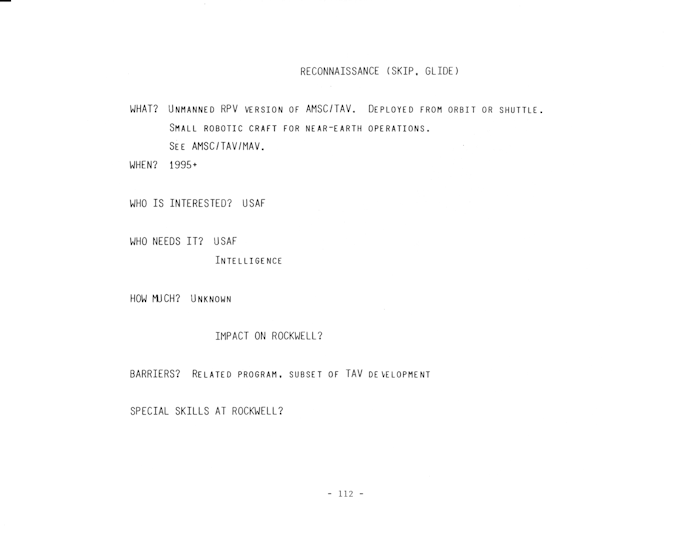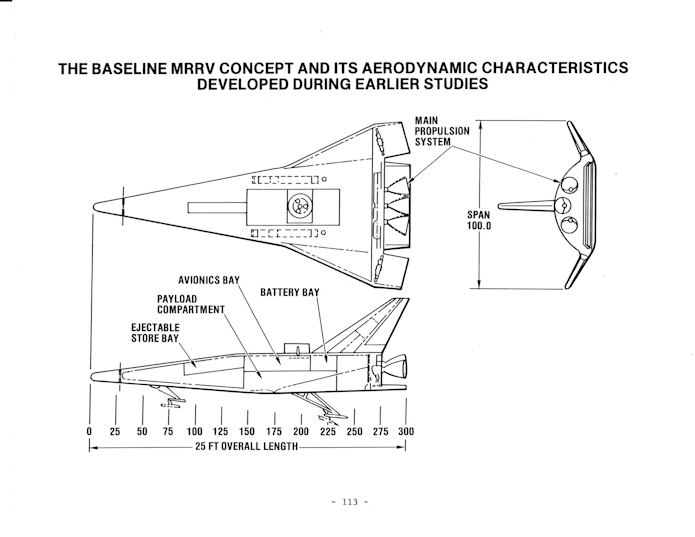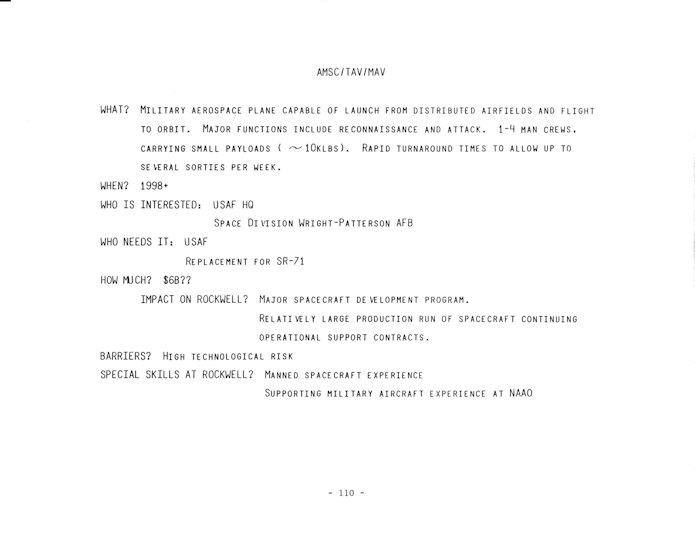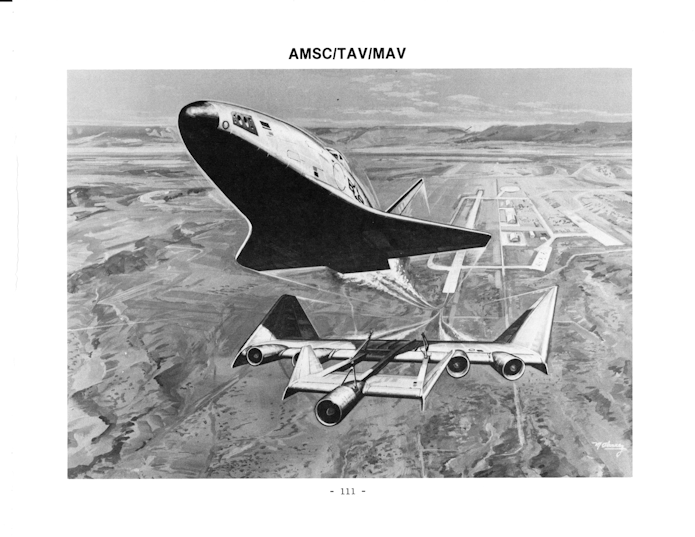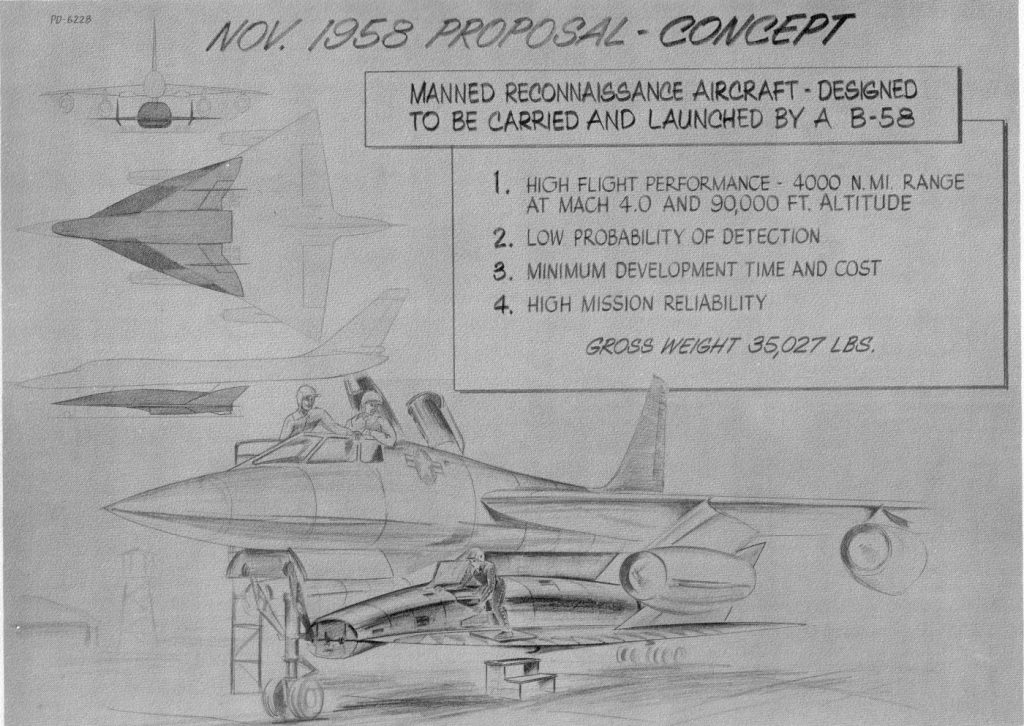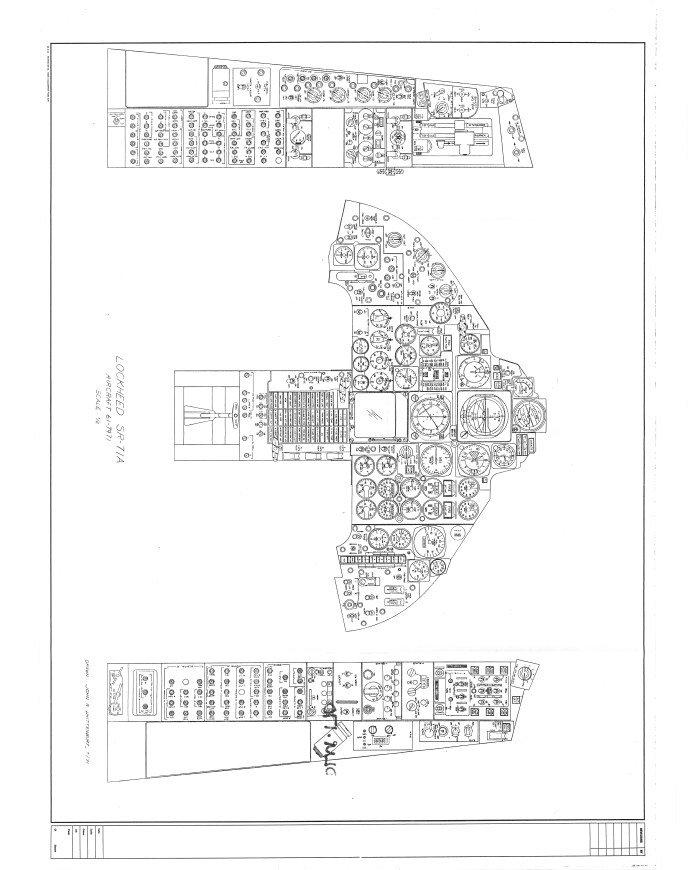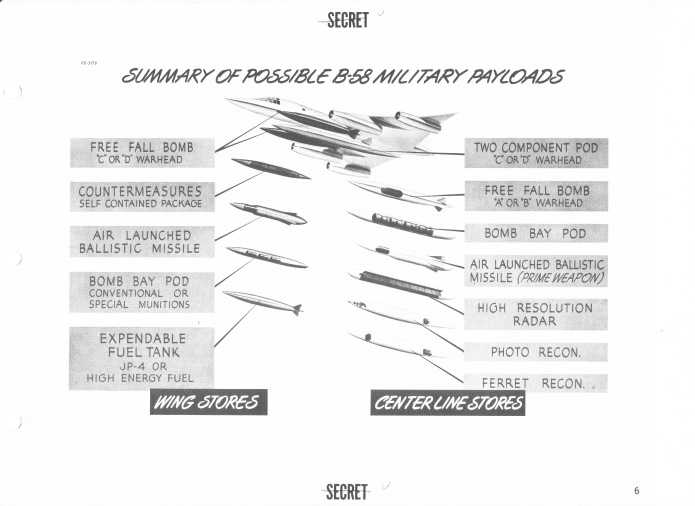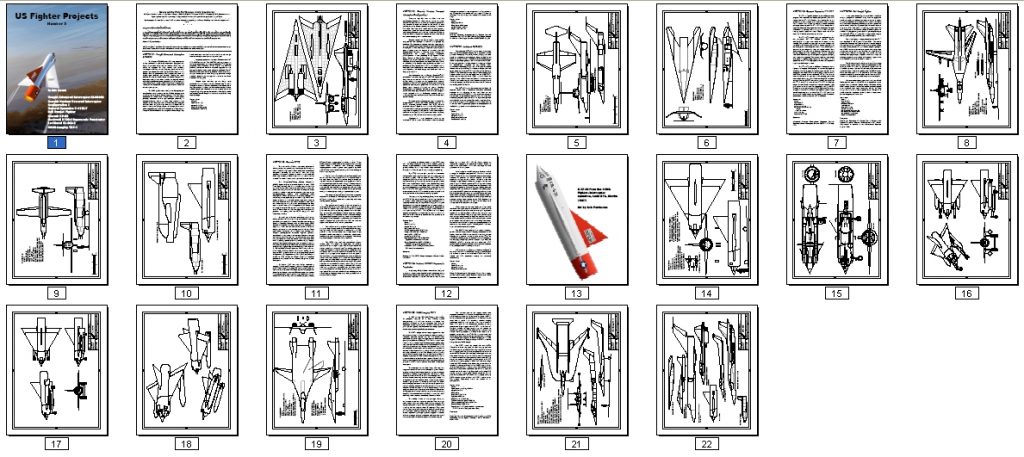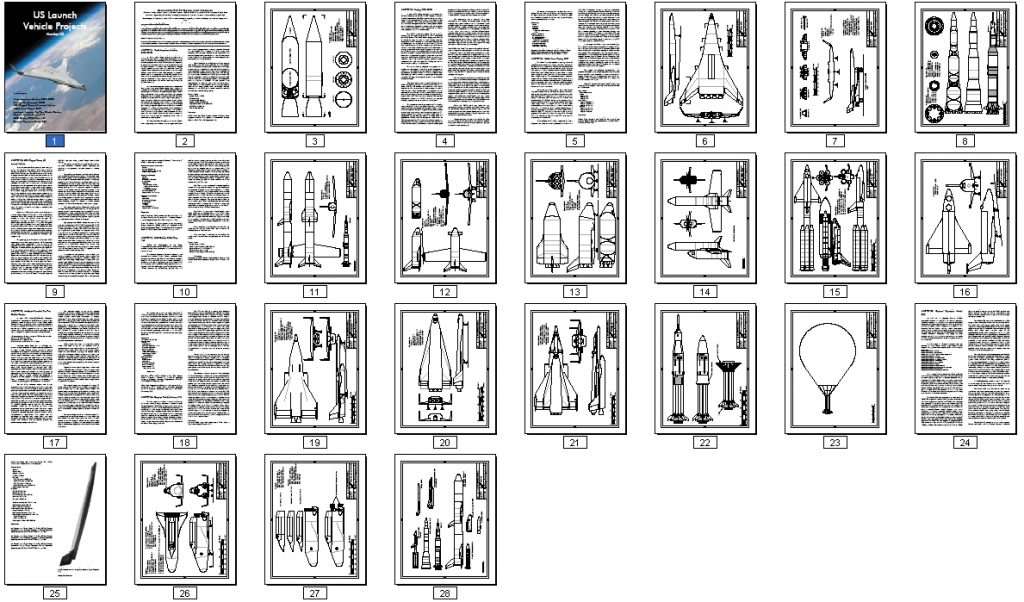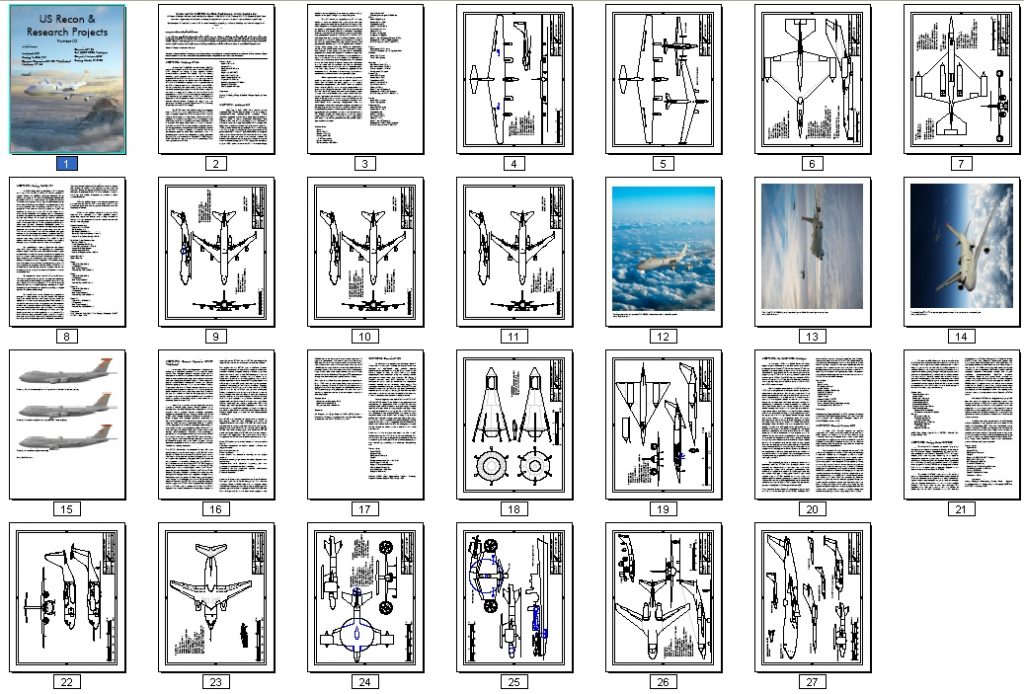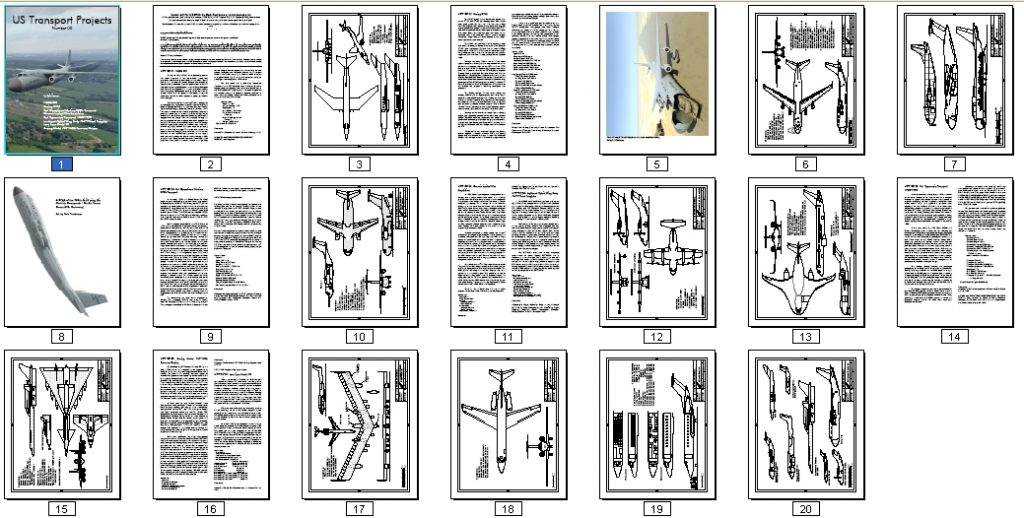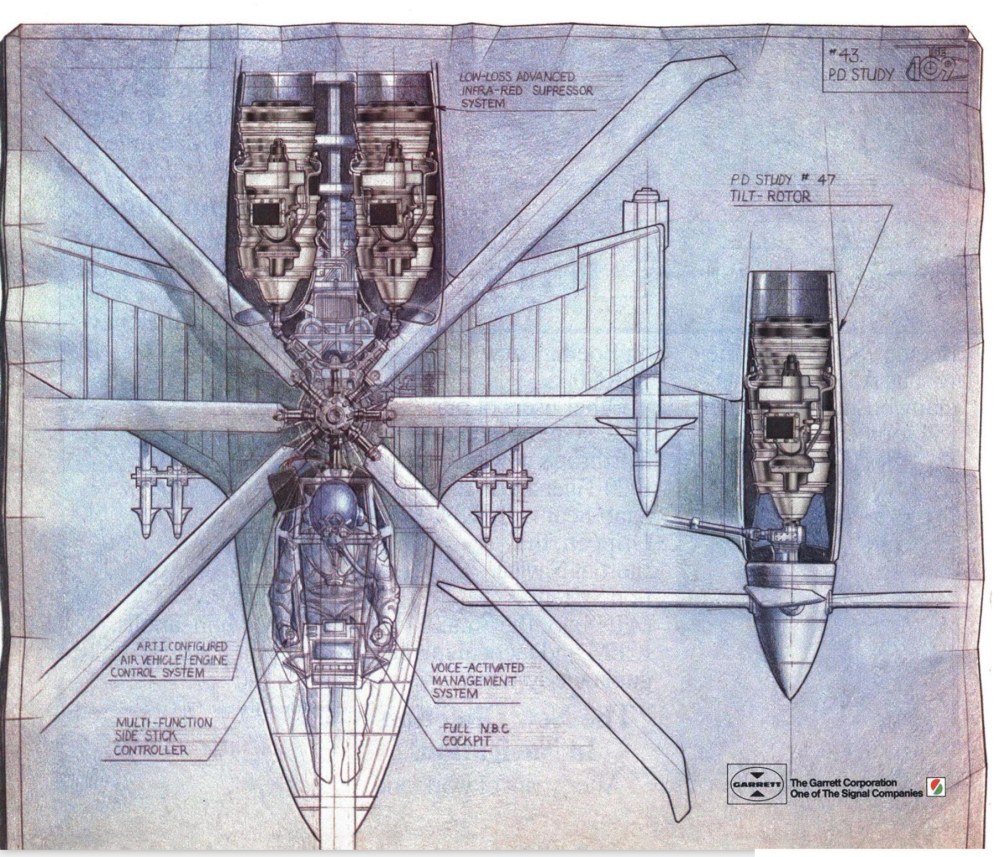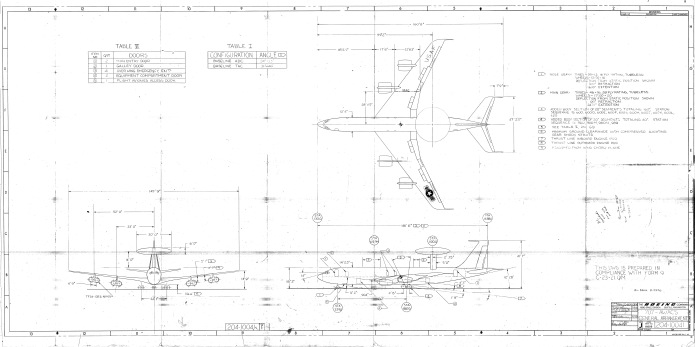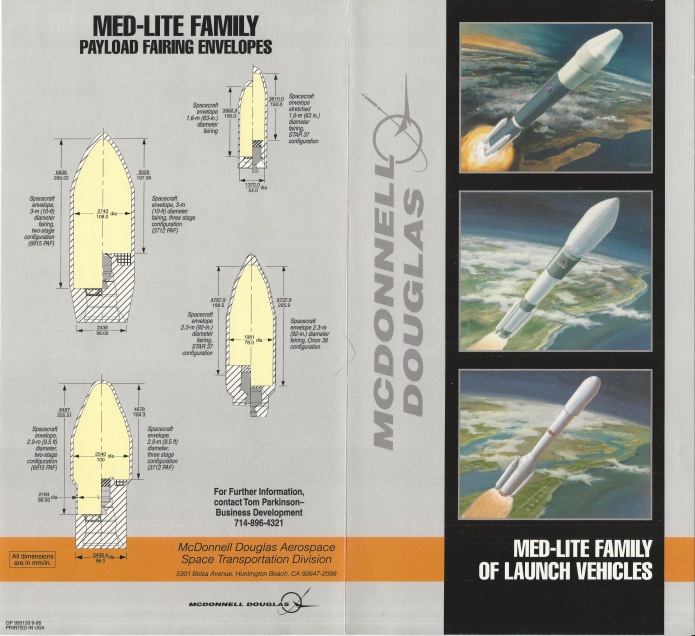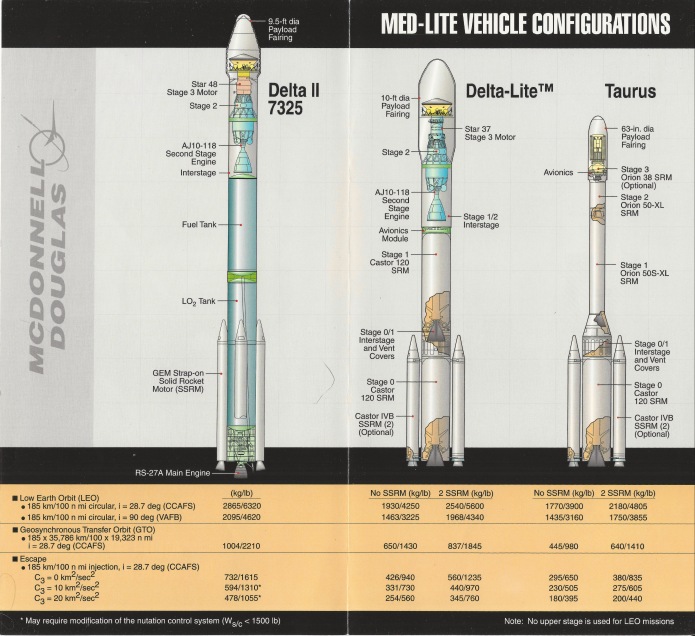In 1985 Rockwell thought that there might be a business case for a small unmanned spaceplane for recon purposes. At the time, the answer was apparently no… but within a few years Rockwell developed the “REFLY” spaceplane which, over a span of a couple decades, transmorgified into the X-37B which has flown a handful of top secret long duration missions.
In the 1980’s, military spaceplanes were all the rage… at least on paper. In 1985 Rockwell International considered the possibility that there would be a profitable business case for a relatively small manned spaceplane that could serve as a rapid-reaction launch system for missions such as recon. Thirty years later the X-37 finally accomplished something sorta along those lines, though without the crew and rapid reaction.
FISH (“First Invisible Super Hustler”) was a ca. 1958 Convair design for a Mach 4 ramjet powered recon aircraft. As ramjets are terrible at accelerating from the runway to cruise speed, the FISH was to be carried underneath a B-58 bomber. The FISH was a relatively small craft, but not *that* small; it actually didn’t quite fit underneath the B-58. Consequently it’s nose was designed to fold down and back while the B-58 was on the ground, providing clearance for the B-58’s nosegear. After liftoff and gear retraction the nose would fold up into its proper position. This would clearly have required fairly powerful actuators as the nose would basically be a substantial drag brake as it folded forward into position.
The FISH was described in the first issue of US Recon & Research Projects, available HERE.
The FISH was derived from the prior “Super Hustler” design study for a ramjet powered Mach 4 parasite bomber to be carried under the B-58. In the case of the Super-Hustler, a special booster stage was used, basically creating a three-stage vehicle. The FISH, if it worked, would have been a masterpiece of engineering, but the requirement for a carrier aircraft was cumbersome to say the least. It was followed by the single-stage “Kingfish,” but in the end the Lockheed SR-71 was chosen. Not quite as fast as FISH, but much more practical.
A pretty detailed layout of the SR-71 pilots instruments.
I have uploaded the full resolution scan of the illustrations to the 2019-05 APR Extras Dropbox folder, available to $4 and up subscribers to the APR Monthly Historical Documents Program.
An early-ish Convair illustration of the potential weapons and other payloads to be carried by the B-58 bomber, both in the centerline pod and under the wing roots. Note not only ballistic missiles but also several recon options, and a “bomb bay pod” giving the aircraft a payload of several gravity bombs, presumably nuclear.
I have uploaded the full resolution scan of the illustrations to the 2019-04 APR Extras Dropbox folder, available to $4 and up subscribers to the APR Monthly Historical Documents Program.
Now available… four new issues in the US Aerospace Projects line.
US Fighter Projects #3
Cover art was provided by Rob Parthoens, www.baroba.be
US Fighter Projects #03 is now available (see HERE for the entire series). Issue #3 includes:
- Vought Advanced Interceptor AI-0604R: a dart-winged ejector ramjet-powered concept
- Convair Nuclear Powered Interceptor Configuration I: a single0seat interceptor with a nuclear reactor
- General Dynamics F-111X-7: A stretched F-111 for bomber escort and interception
- Bell Ramjet Fighter: A subsonic small fighter from the end of WWII
- Convair XP-92: A post-war delta-winged ramjet powered supersonic interceptor
- Rockwell D736-4 Supersonic Penetrator: the wings could sweep back entirely within the fuselage
- Lockheed CL-362-2: A high-altitude hypersonic rocketplane
- NASA-Langley TBF-1: an unusual supercruiser
USFP #3 can be downloaded as a PDF file for only $4.25:
——–
US Launch Vehicle Projects #5
Cover art was provided by Rob Parthoens, www.baroba.be
US Launch Vehicle Projects #5 is now available (see HERE for the entire series). Issue #5 includes:
- North American Aviation 600K SSTO: an early concept for cheap space launch
- Boeing “Windjammer” SSTO: A horizontal takeoff design form the early 70s
- JSC Winged Heavy Lift Launch Vehicle: A giant SPS launcher
- NASA Nova “Saturn C-8”: an early Apollo booster
- Lockheed Reusable Ten-Ton Orbital Carrier: A logistics system from the early 60s
- Chrysler Hot Air Balloon S-IB: An unusual approach to booster recovery
- MSC Orbiter 042A Titan IIIL6: A shuttle design with a delta-winged orbiter on an enlarged Titan
- General Dynamics Model 202: a preliminary design for a Brilliant Pebbles launcher
USLP #5 can be downloaded as a PDF file for only $4.25:
——–
US Recon & Research Projects #3
Cover art was provided by Rob Parthoens, www.baroba.be
US Recon & Research Projects #3 is now available (see HERE for the entire series). Issue #3 includes:
- Lockheed A-2: An early design leading to the SR-71
- Boeing NuERA 747: A nuclear powered 747
- General Dynamics SX-109 “Pathfinder”: a subscale SSTO demonstrator
- Northrop N-165: A giant U-2 alternate
- Convair M-125: A high altitude/speed single seat recon plane with toxic fuel
- Bell AMST STOL Prototype: A heavily modified C-130
- Convair Nuclear AEW: unmanned, nuclear powered VTOL fleet defense recon platform
- Boeing Model 818-300: an early 60s battlefield surveillance platform
USRP #3 can be downloaded as a PDF file for only $4.25:
——–
US Transport Projects #8
Cover art was provided by Rob Parthoens, www.baroba.be
US Transport Projects #8 is now available (see HERE for the entire series). Issue #8 includes:
- NACA SST: a 1947 concept
- Boeing CX-HLS: Boeings design for what became the C-5
- Bell Operational Medium STOL Transport: vectored thrust for short takeoff
- Convair Limited War Amphibian: A concept for a single plan to meet both land and sea plane requirements
- Bell Hypersonic Transport 1980-1990:A two-stage turboramjet/rocket concept
- Lockheed Hybrid Wing Body 757PF-Sized Freighter: a recent design for an advanced transport
- Lear Liner Model 40:a small airliner/large executive transport
- Boeing Model 759-153A Resource Carrier: A big flying wing natural gas “tanker”
USTP #8 can be downloaded as a PDF file for only $4.25:
——–
In the mid-80’s, the Army wanted a light, fast, stealthy and armed helicopter for battlefield recon and the like. It was not meant to be an attack chopped like the AH-64, but rather something much more akin to the OH-58 Kiowa… it would spot the targets and target them, with the missiles like as not coming in from another source. In the end the LHX program resulted in the RAH-66 Comanche… which, as per usual, was cancelled after only a few were built.
While the Comanche was a more or less coventional sort of helicopter, early in the program the requirements were both aggressive enough and vague enough that very unconventional aircraft types were considered. Single-seat NOTAR and tiltrotor concepts were some of the least unconventional of the unconventionals, and those types got a fair amount of press at the time. It’s difficult to be certain just how serious some of them were, though companies like Bell put some considerable effort into tiltrotor ideas.
One image that I saw fairly commonly at the time was in an ad for turbine engine manufacturer Garrett. It’s a wonderful bit of art for engineering types like myself, and I always hoped that it was a serious design… but it was almost certainly not. Rather, it was either art-department guesswork or, at best, a notional design put forward by an engine company to show to aircraft manufacturers what their engines could do. It shows a single-seat design (the Comanche ended up being a two-seater, because flying a helicopter is difficult enough without the added burden of futzing around with sensors and weapons) with Kamov-style counter rotating rotors, stub wings and numerous air-to-air missiles. The Soviet Hind helicopter was giving NATO conniptions at the time, and an important role for the LHX was to sweep those flying battlewagons from the sky. The design is also shown as having a tilt-rotor option… something that would be truly unique in the history of aviation design. The tail of the craft (if any – it might have been meant to be a really, really stubby aircraft) is not shown, probably because it was never designed. I’d love to be wrong, though… teenage-me loved this thing back in the day.
Convair B-58A serial number 55-665 was unique due to the extended nose radome. This was in support of the YF-12 program: the AN/ASG-18 radar from the YF-12 was grafted onto the nose of the B58, and a special pod was constructed that would carry a single AIM-47 missile on a deployable “trapeze” launch rail like the YF-12.
SN 55-665 is one of the few surviving examples of the B-58. Sadly… “surviving” is a relative term. It’s sitting in the Mojave desert at Edwards Air Force Base, out in the approximate middle of nowhere; it has been stripped of pretty much everything including not only engines but also nacelles. It was placed there not as a gunnery target, but a photo target for satellite reconnaissance systems. (satellite imagery can be seen HERE) The desert is a benign environment for long term storage of metallic aircraft, but it it still non-optimum. It can clearly be found and climbed upon, which seems not only disrespectful but also unwise.
Seems to me that this aircraft should be taken to a museum and restored. However, restoring it to the appearance of a flyable aircraft would seem a virtual economic impossibility given its depleted state. Still… it does seem that it could be cleaned up, some missing bits restored, and put on display as a “cutaway” showing the inner workings of the aircraft.
APR Patrons contributing more than $10 per month were today sent a 1969 diagram of a preliminary design for what would become the AWACS plane… close, but with eight engines rather than four. This design was illustrated in color artwork from time to time.
And for APR Patrons at the $4 and above level, a diagram of the 777 and scans of a McDonnell-Douglas brochure on the “Med-Lite Family” of launch vehicle concepts have been uploaded to the 2018-04 APR Extras folder on Dropbox:
If you are interested in these and a great many other “extras” and monthly aerospace history rewards, please sign up for the APR Patreon. What else are you going to spend $4 a month on? Taxes?
Some old-school animation showing the AH-56 as a recon and targeting vehicle being used in Someplace Much Like Viet Nam. If you’re at all like me, you’ll watch this and think, “I don’t recall this episode of Jonny Quest.”
